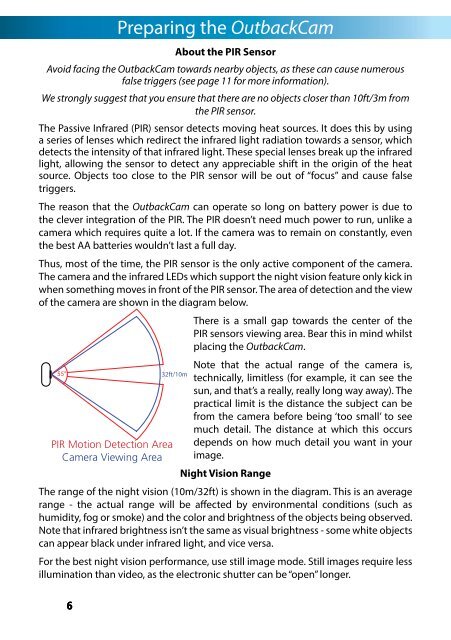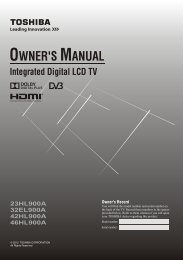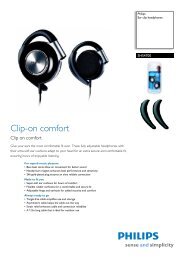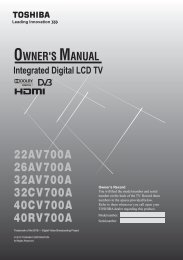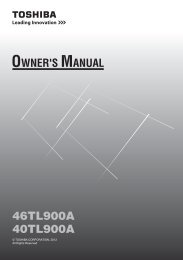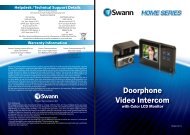OutbackCam - Swann Communications
OutbackCam - Swann Communications
OutbackCam - Swann Communications
You also want an ePaper? Increase the reach of your titles
YUMPU automatically turns print PDFs into web optimized ePapers that Google loves.
Preparing the <strong>OutbackCam</strong><br />
About the PIR Sensor<br />
Avoid facing the <strong>OutbackCam</strong> towards nearby objects, as these can cause numerous<br />
false triggers (see page 11 for more information).<br />
We strongly suggest that you ensure that there are no objects closer than 10ft/3m from<br />
the PIR sensor.<br />
The Passive Infrared (PIR) sensor detects moving heat sources. It does this by using<br />
a series of lenses which redirect the infrared light radiation towards a sensor, which<br />
detects the intensity of that infrared light. These special lenses break up the infrared<br />
light, allowing the sensor to detect any appreciable shift in the origin of the heat<br />
source. Objects too close to the PIR sensor will be out of “focus” and cause false<br />
triggers.<br />
The reason that the <strong>OutbackCam</strong> can operate so long on battery power is due to<br />
the clever integration of the PIR. The PIR doesn’t need much power to run, unlike a<br />
camera which requires quite a lot. If the camera was to remain on constantly, even<br />
the best AA batteries wouldn’t last a full day.<br />
Thus, most of the time, the PIR sensor is the only active component of the camera.<br />
The camera and the infrared LEDs which support the night vision feature only kick in<br />
when something moves in front of the PIR sensor. The area of detection and the view<br />
of the camera are shown in the diagram below.<br />
55° 32ft/10m<br />
PIR Motion Detection Area<br />
Camera Viewing Area<br />
There is a small gap towards the center of the<br />
PIR sensors viewing area. Bear this in mind whilst<br />
placing the <strong>OutbackCam</strong>.<br />
Note that the actual range of the camera is,<br />
technically, limitless (for example, it can see the<br />
sun, and that’s a really, really long way away). The<br />
practical limit is the distance the subject can be<br />
from the camera before being ‘too small’ to see<br />
much detail. The distance at which this occurs<br />
depends on how much detail you want in your<br />
image.<br />
Night Vision Range<br />
The range of the night vision (10m/32ft) is shown in the diagram. This is an average<br />
range - the actual range will be affected by environmental conditions (such as<br />
humidity, fog or smoke) and the color and brightness of the objects being observed.<br />
Note that infrared brightness isn’t the same as visual brightness - some white objects<br />
can appear black under infrared light, and vice versa.<br />
For the best night vision performance, use still image mode. Still images require less<br />
illumination than video, as the electronic shutter can be “open” longer.<br />
6


